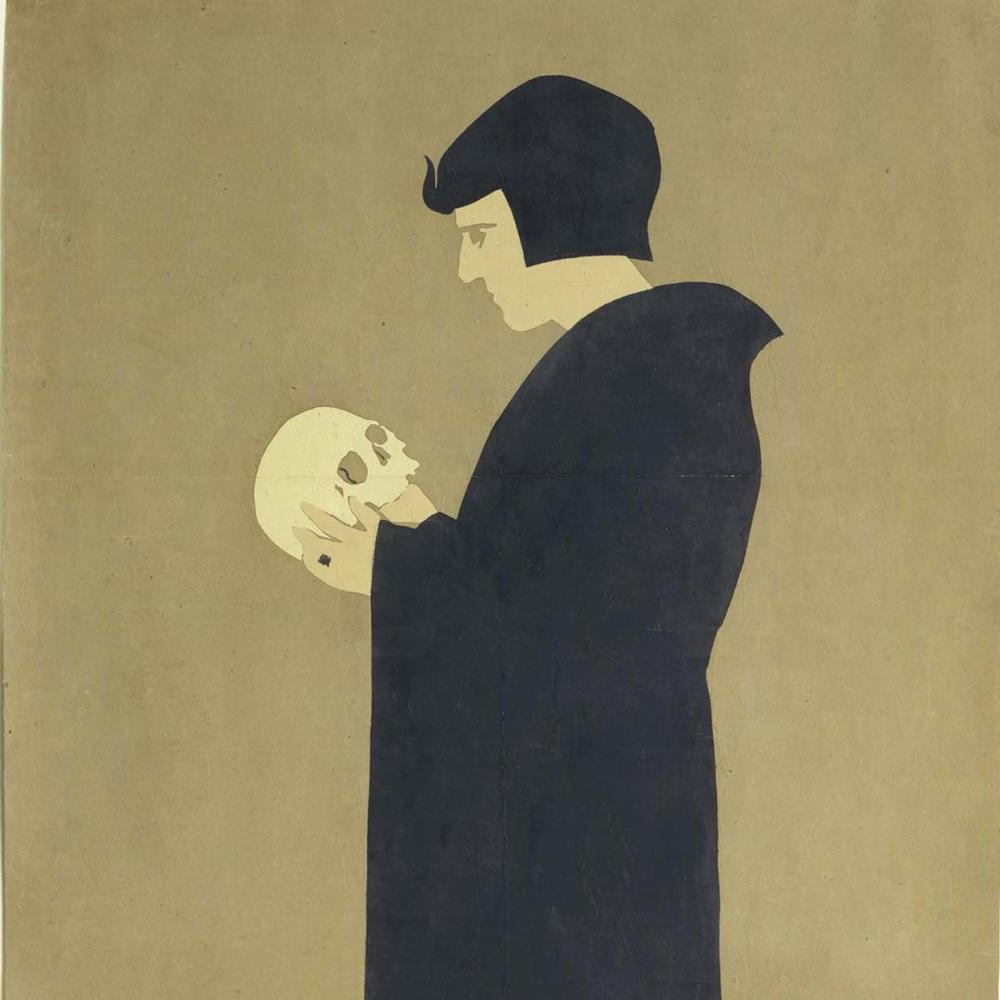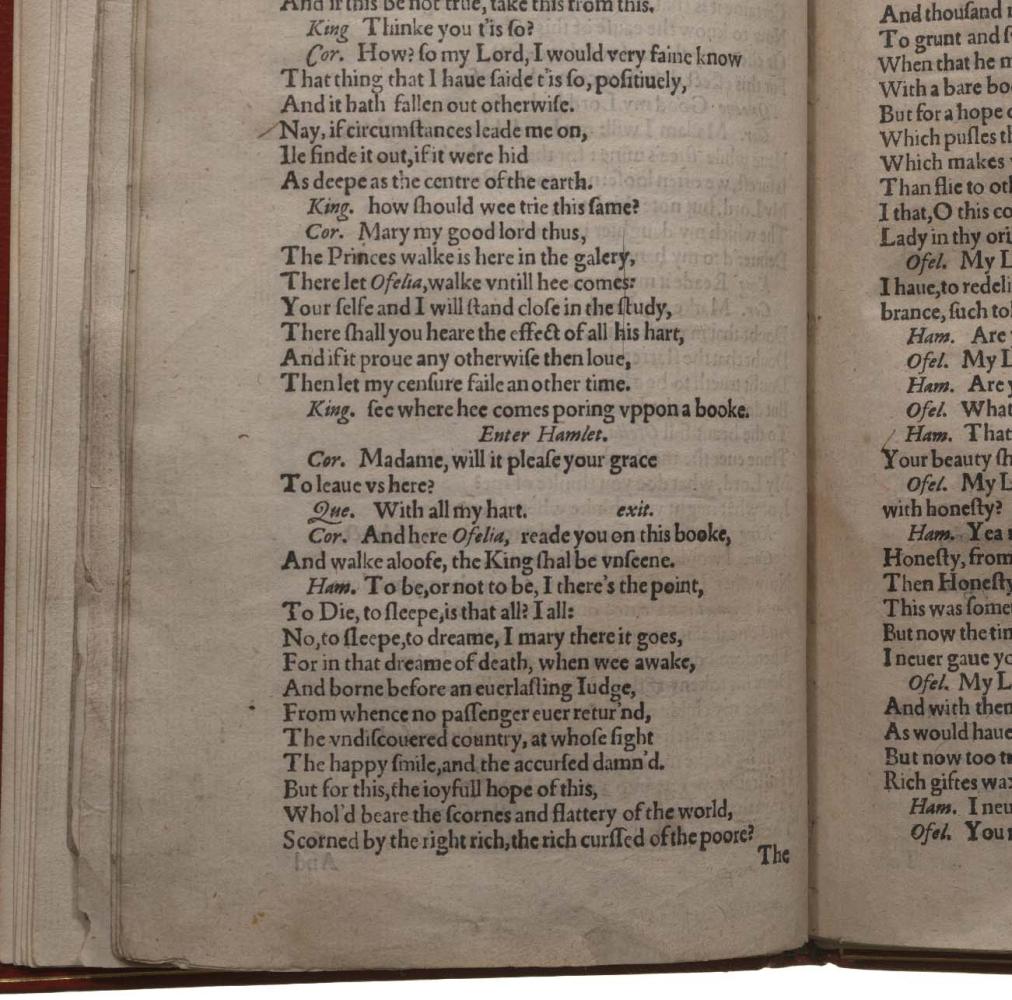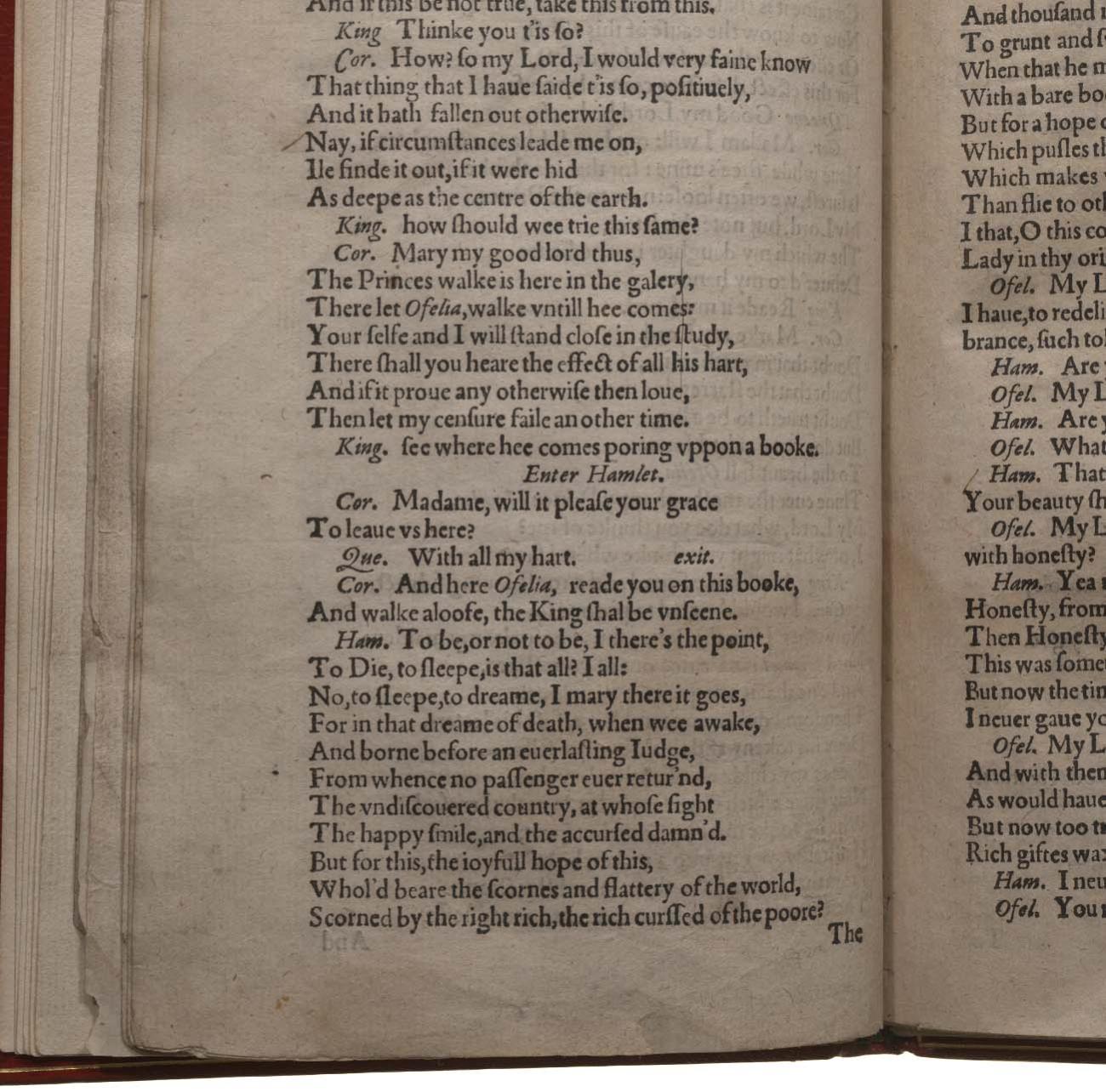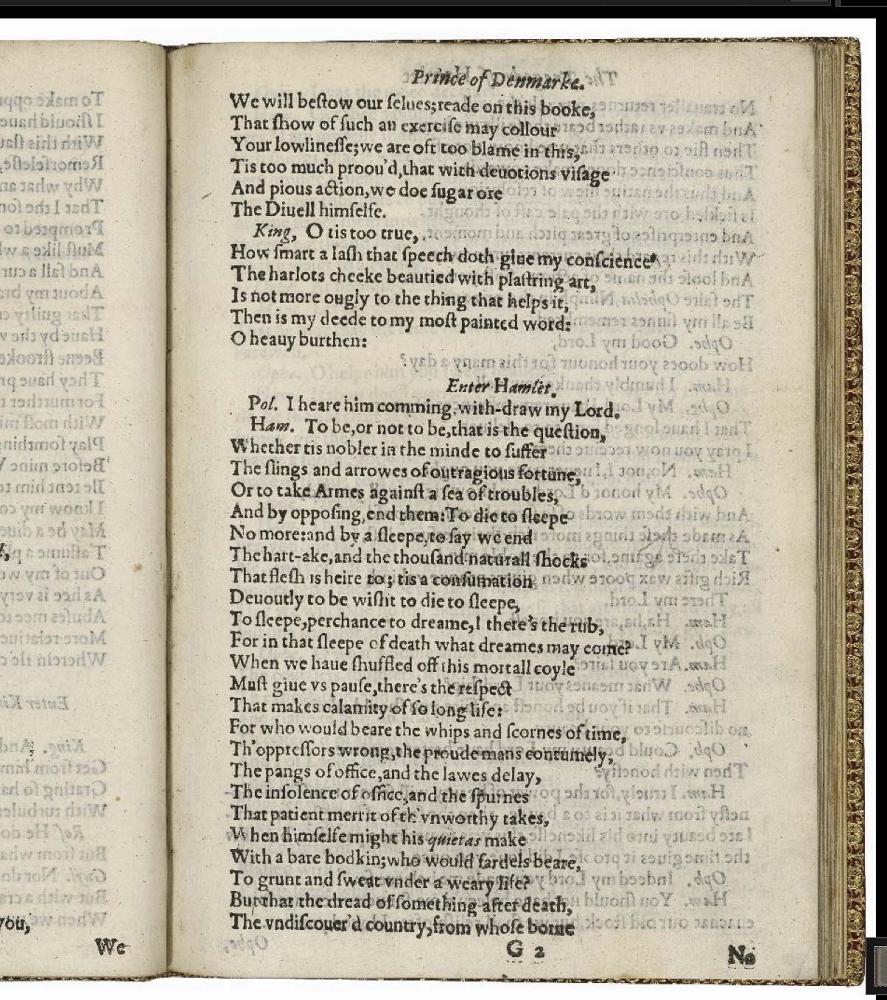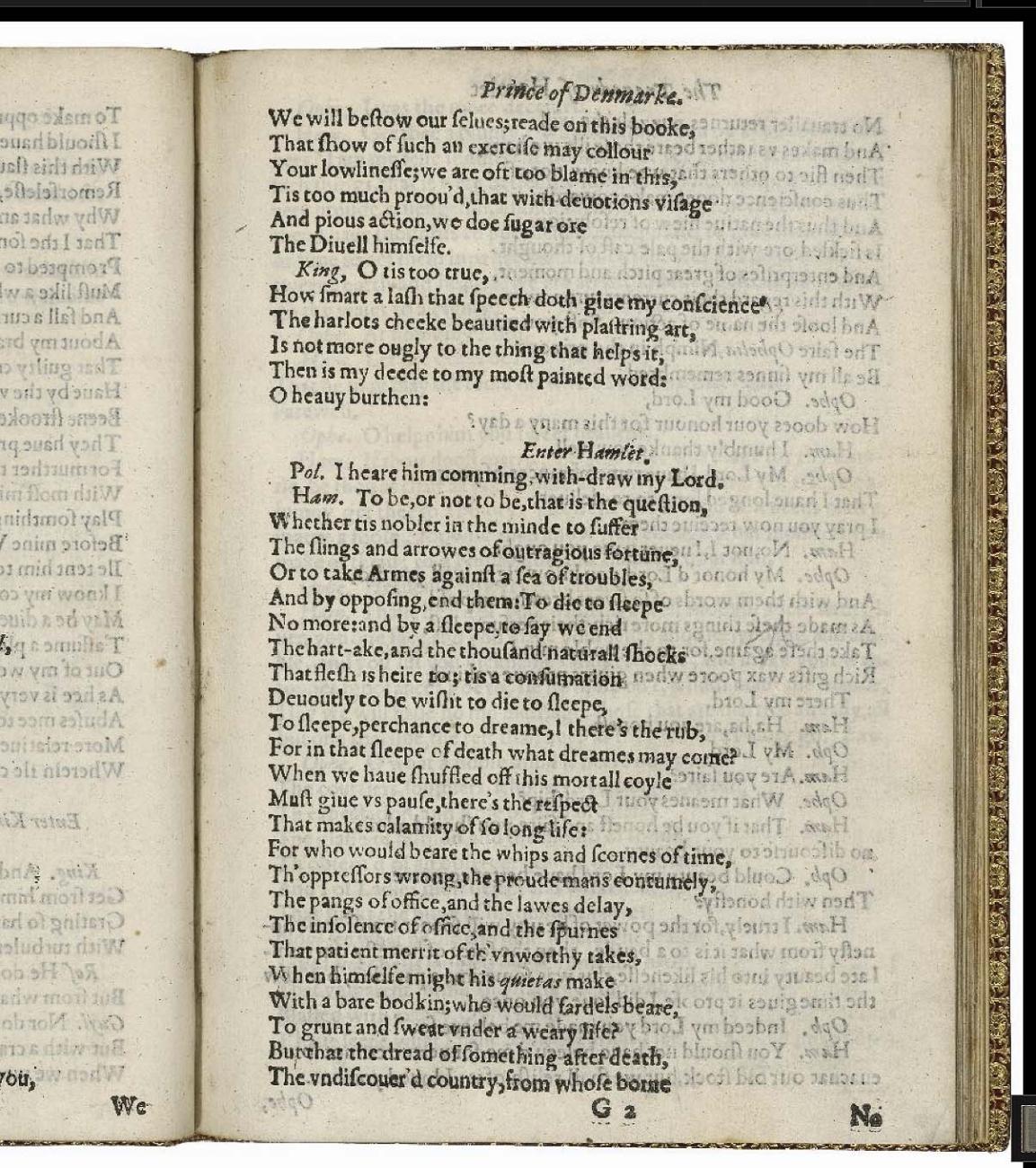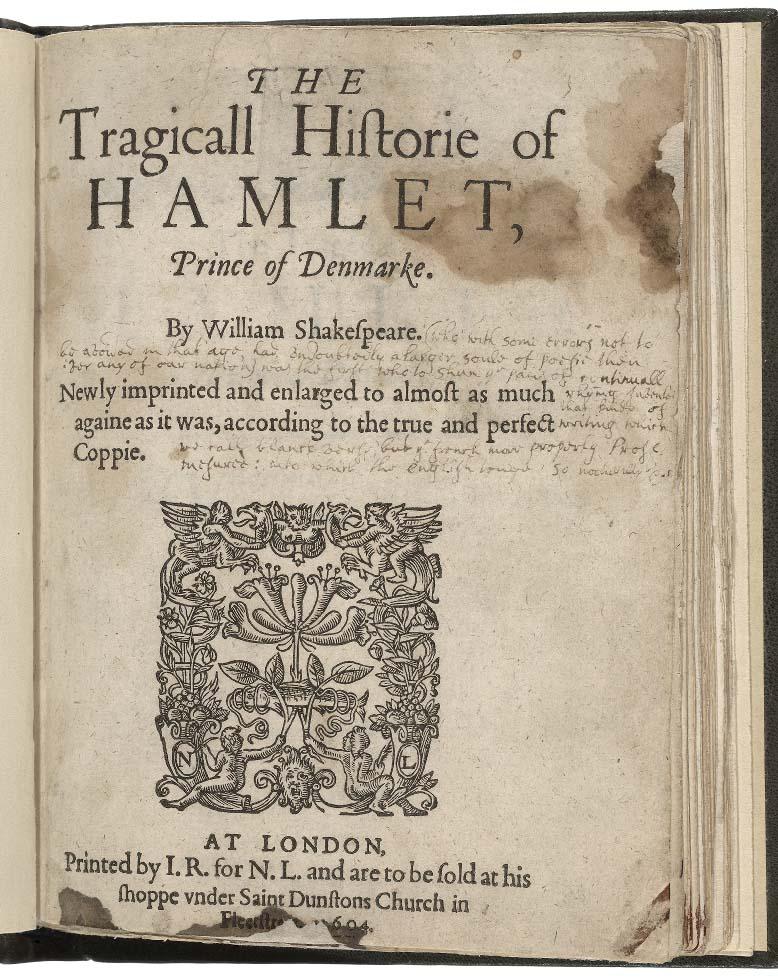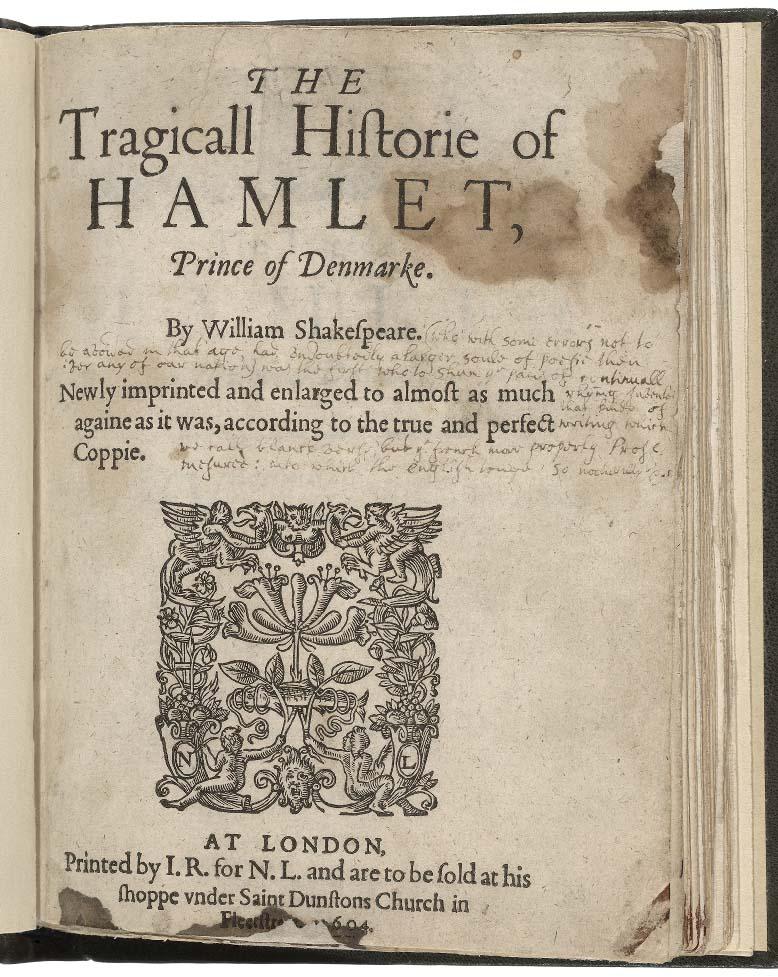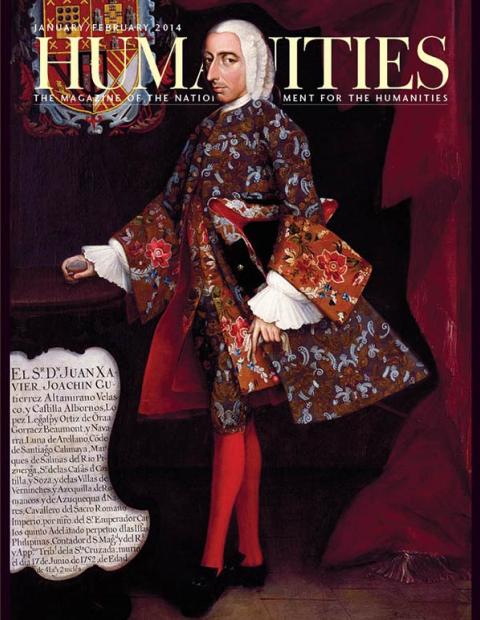“A finite universe”—that’s the phrase that Jim Kuhn uses to describe the surviving early quartos of Shakespeare’s plays. It evokes something that seems more expansive and dynamic than the estimated 777 paperback-sized volumes that, for the last four hundred years, have physically carried our most direct evidence of the Bard’s work. It also begins to suggest the appeal of those volumes in aggregate: There is an end to their universe, the texts that define it can be collected, and that collection, completed.
Five years ago, Kuhn, then head of collection information services at the Folger Shakespeare Library, helped to prototype just such a collection: a digital repository capable of bringing together in one location the sparse and geographically scattered universe of these rare Shakespeare texts. The project, which was led by the Folger and the University of Oxford, involved librarians, curators, computer scientists, educators, and interns from scholarly institutions on both sides of the Atlantic.
As a proof of concept, they tackled the thirty-two early copies of Hamlet held by the participating libraries (the Folger, the British Library, the Bodleian Library at Oxford, the Huntington Library, the National Library of Scotland, and the University of Edinburgh Library). Sixteen months spent gathering cover-to-cover digital images, producing transcriptions, and developing an online interface resulted, in November of 2009, in the Shakespeare Quartos Archive, which boasts the most comprehensive collection of early Hamlets available and is setting an example for newer literary archives such as the recently announced Shelley–Godwin Archive.
Among Shakespeare’s works, Hamlet is an obvious choice for such an endeavor, not only because of the play’s iconic status in literary and popular culture, but because many perplexities surround its textual transmission. “Hamlet goes from the stage to the printed page at one point or another,” says Steven Galbraith, another former member of the SQA’s Folger team; “but the printed page is, materially, what survives for us.” We don’t have an authorial manuscript (of Hamlet or any of the Bard’s works) against which to judge those pages, and, as it turns out, we don’t have an unassailably stable Hamlet in any form: We have Hamlets, plural—a circumstance that becomes amply clear when one turns to the surviving quartos themselves.
Questions start cropping up with the earliest known Hamlet ascribed to Shakespeare (more on that “ascribed” in a moment). The first quarto—or Q1, for short—published in 1603, is about half as long as the Hamlet you read in high school and surprisingly unfamiliar in its particulars. Where the opening scene usually has “Stand and unfold yourself” (richly interpretable, Shakespearean), Q1 has simply “Stand: who is that?” A character named Corambis takes the place, and many of the most memorable lines, of the aphorism-prone courtier Polonius. And the famous prince’s most famous soliloquy? “To be or not to be” occurs an act earlier than expected, is missing more than a few verses, and begins with an awkward thud:
To be, or not to be, I there’s the point,To Die, to sleepe, is that all? I all:
No, to sleepe, to dreame, I mary there it goes.
Just what to make of this ham-fisted Hamlet has puzzled scholars since its rediscovery in 1823 (“a great curiosity,” the English baronet who found the first of two extant copies remarked). Given its primacy in the play’s line of textual succession, it is tempting to regard Q1 as an early draft of the masterpiece that Shakespeare would eventually refine from its raw material—but that theory went out of fashion about a hundred years ago. More recently, scholars have argued either that Q1 was a bootleg or a memorial reconstruction, assembled from memory by an audience member or actor from Shakespeare’s troupe, the King’s Men, or that it was a performance text, abridged from a longer copy (itself represented by the later editions) to keep the cast minimal and the action moving.
But here’s the rub (and, not incidentally, the reason that, even in prototype, the SQA is worth digging through): Q1 is only the most pronounced example of variation among the early texts of Hamlet. Five quarto editions of the play (and two folio editions, unfortunately, not included in the SQA) were printed before London’s playhouses shut down in 1642. Look closely enough, and not just every edition, but every copy differs from every other.
Helping readers get a good look at these quartos is where the SQA excels. Partnering with yet another scholarly institution (the Maryland Institute for Technology in the Humanities, which is part of the University of Maryland, College Park), the SQA team developed a web-based interface and set of digital tools designed for close, almost microscopic, comparative analysis. Among a number of other features, one can execute word searches on the texts, superimpose and adjust the transparency of page images, and run a difference algorithm that immediately highlights every inconsistency—including printers’ marks, marginal notations, and other paratextual matter—between any two of the archive’s scrupulously executed transcriptions. Armed with these tools, the “originals” can begin to look like a dense patchwork of inconsistency—Hamlet, hopelessly at odds with itself.
To be fair, a sizable number of the variations among the early copies (Q2 through Q5, specifically) are safely attributable to compositors’ flubs (eyeskip errors or other misreadings committed when setting type) or the prevailing trends in spelling and punctuation (“curtesie” versus “courtesie,” “voyce” versus “voice,” etc.). Such inconsistencies are interesting in their own right—for what they can tell us about printing practices of the time, or the evolution of English orthography—even if they have little to say about the play itself.
But there’s plenty of other grist for comparative grinding, and even the most minor discrepancies (discrepancies readily apparent in the SQA, but often too minor to be remarked in critical print editions of the play) can send one down intriguing paths. For instance, when Claudius asks Hamlet not to leave Elsinore, does he say, as Q2 indicates, “going back to schoole in Wittenberg, / It is most retrogard to our desire,” or, as Q3 (published in 1611) has it, “going back to schoole to Wittenberg”? The shift from “in Wittenberg” to “to Wittenberg” is almost meaninglessly subtle; but the questions that that shift can raise, especially in light of similar changes, are far-reaching. Aside from the obvious and unanswerable (What, exactly, did Shakespeare write?), one might ask: Did the compositor responsible for that portion of Q2 set the wrong word from a clean manuscript? Did those responsible for setting Q3 even have a manuscript on which to base corrections? Or did they, in fact, set the wrong word from a printed copy of Q2?
Finally, there are the truly substantive mysteries of the play’s multiple texts, which, though almost always taken up in scholarly footnotes, would be all but impossible to trace through the early quartos without the aid of the SQA or some similar collection. Among these are the “too too sallied flesh” that Hamlet mopes over in his first soliloquy (consistent throughout the pre-1642 quartos, despite an emendation to “solid flesh” in the folio of 1623) and the oddly “fond” deeds that, in Q2, he forbodes after hearing that his father’s ghost has been spotted wandering the battlements:
My fathers spirit (in armes) all is not well,I doubt some foule play, would the night were come,
Till then sit still my soul, fonde deedes will rise
Though all the earth ore-whelme them to mens eyes.
Every other quarto edition, including Q1, has not “fonde,” but “foule” at the center of this passage—arguably, a more appropriate word in the context of the scene. But, as at least one editor of Hamlet has suggested, “fonde” may have been intended in the now-antiquated sense of foolish or mad (not tender or affectionate). And Hamlet’s madness—his “antic disposition”—runs through the play almost as deeply as the foul deed of his father’s murder.
“So why would you want to look at the originals?” asks Kuhn. “I mean, you can buy an expertly edited edition of Hamlet for five bucks, and you’ve got the benefit of a couple hundred years of scholarship.” His answer: “This is where I start thinking about the nature of evidence and about conjectures that we can evaluate on the basis of things that we can all see. I do want to hear from the senior scholars on these questions”—questions about what “belongs” in Hamlet, about what Q1 might be, and so on—“but I also want an opportunity to expose the evidence on which answers to some of these very basic questions—questions that you might think had already been answered—could be based.”
Galbraith, a curator by trade, has another perspective on the body of evidence that the SQA offers up, one that looks beyond the Hamlet texts themselves, to their value as archaeological specimens. “Every book has its own story,” he says, “and using the SQA with a critical eye, you can really begin to see that. There are differences in bindings, different people have owned them and marked them up, used them in different ways.” And the bigger question, he adds, the one to which all these differences lead, is one of provenance: “Where has this book been for the last four hundred years?” Tracing the hand or characteristic markings of some previous reader through the text, focusing on the passages or words that he or she focused on, identifying the binder or the most worn pages, one can begin to piece together the trajectories of these individual books through history and how they were used.
The SQA’s collection of high-resolution and transcribed Hamlets may, with some clever detective work, prove a boon to literary scholars and bibliographers. But, as both Kuhn and Galbraith point out, the archive also helps to raise and answer questions touching on digitization efforts beyond Shakespeare: What do you do when the imaging and transcription are done? What can you do with the texts now that you couldn’t do before? Neither the content of the plays—the lines, words, punctuation marks, paratextual matter, marginalia—nor the images of their physical medium necessarily suggest all of the uses to which the data might be put. Making the texts accessible, and, what is more important, accessible as data, opens them up to modes of analysis and creativity beyond those traditionally associated with the humanities. “The goal,” says Galbraith, “is to release that data and let the scholars, directors, and artists, or whoever is coming to the quartos, do their work with them in whatever way, for whatever reason.” One wonders what a statistician, digital artist, or data visualization expert might find in the SQA.
The wonderful thing about Q1 is that it is so unlike the Hamlet that we think we know—so unrefined, indeed, un-Shakespearean—that we can more fully appreciate the accomplishment of the Bard’s masterpiece, experience the story of a Danish prince’s loss and revenge again as something fresh, thrilling, and tragic. The SQA has a similar effect: Hamlet grows to unfamiliar dimensions (its full share of Shakespeare’s universe) and, having transcended the rigidity of print for the more mutable realm of data, will perhaps extend its orbit to other spheres entirely.

